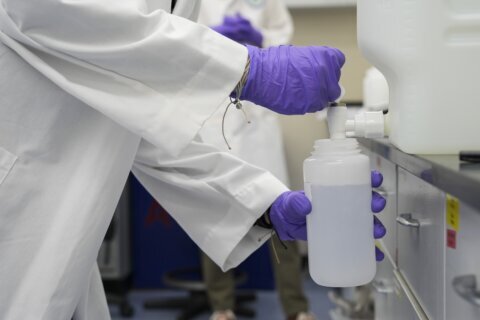
The Environmental Protection Agency has announced strict limits on dangerous and harmful “forever chemicals” in drinking water. Many local water utilities are now seeing how these new regulations will affect their operations.
The new standard is a maximum containment level of 4 parts per trillion for some of the PFAS chemicals. That’s about one drop of water in five Olympic-sized swimming pools.
“We have been monitoring since 2020. So that’s four years of monitoring and we have found that the levels are below the rule set by the EPA today. And that’s great news for us. Doesn’t mean that we are taking that for granted,” said Priscilla To, senior scientist at WSSC Water.
PFAS are chemicals linked to increased risks for a host of health issues, including certain cancers, liver disease and low birth weight.
They are found in many common household items, such as nonstick cookware, stain repellents in carpets and other fabrics, and cosmetics that are water repellent.
“They don’t break down very easily. So they’ve been using it since the 1940s and because they’ve been used so widely, they just cycle around in the environment. And that’s why they’re found in water,” To said.
WSSC Water is expecting to open a new lab in the fall that will be testing PFAS. But filtering the chemicals is a different story and extraordinarily expensive.
“Between $1.4 billion to about $3 billion. And that’s just at one of our two treatment plants,” To said when asked how much it would cost WSSC Water.
Get breaking news and daily headlines delivered to your email inbox by signing up here.
© 2024 WTOP. All Rights Reserved. This website is not intended for users located within the European Economic Area.






